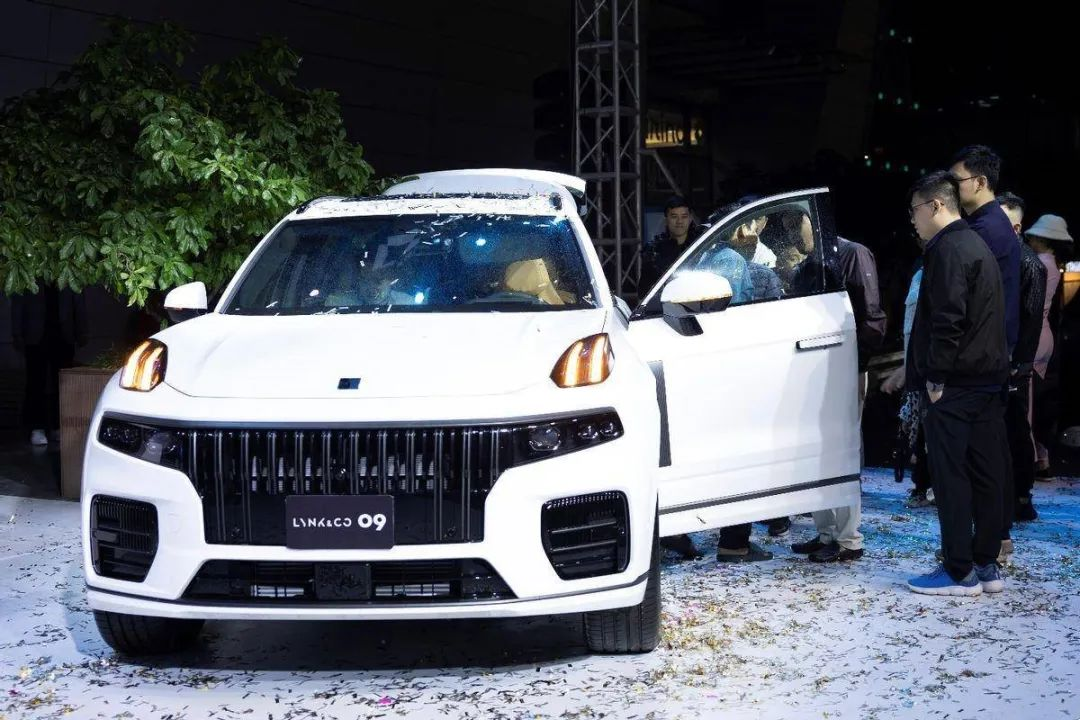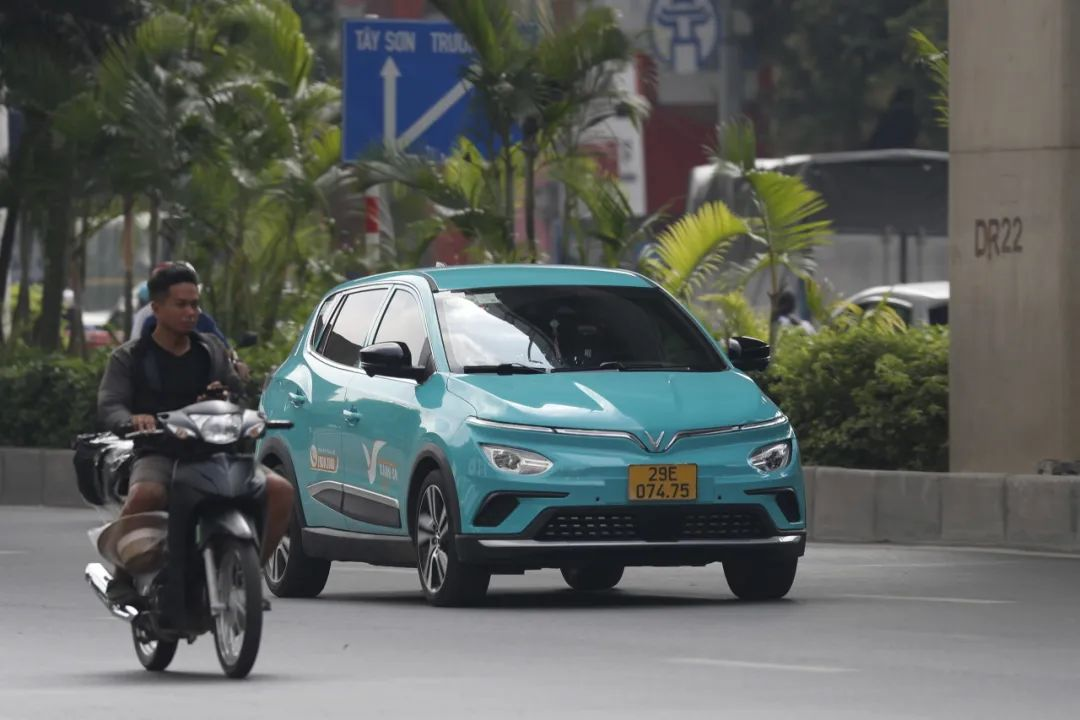The streets of Southeast Asia are witnessing a growing presence of Chinese automobiles.
On December 16, 2023, Lynk & Co made a formal announcement of its entrance into the vibrant Vietnamese market. The inaugural Lynk & Co Space unveiled its offerings in Hanoi, showcasing the 09, 05, and 01 models. A Lynk & Co store is slated to start operations in Ho Chi Minh City this month. Lynk & Co has been successful in Middle Eastern markets like Kuwait, Israel, Saudi Arabia, and Oman since launching its “Asia Pacific strategy” in November 2021, establishing five Lynk & Co centers and two Lynk & Co Space locations across the region.

When it comes to transport, Vietnam is renowned for its iconic motorcycles. Today, with the Vietnamese government’s keen focus on energy transition, a multitude of policies surrounding new energy vehicles are taking center stage, ranging from the electrification of public transport to the gradual phasing out of fuel cars.
Combined with its relatively young population and increasing openness toward international players, more car companies are heading to Vietnam. The Vietnam Automobile Manufacturers Association (VAMA) anticipates that, by 2030, the number of electric vehicles in Vietnam will reach 1 million, increasing to 3.5 million by 2040.
The confluence of these factors has given rise to the emergence of VinFast in the Vietnamese capital market. Born just four years ago, this company briefly held the esteemed position of the world’s third largest automotive enterprise.
Thanks to Vietnam’s exemption of complete vehicle import taxes for fellow ASEAN member countries, exporting to Vietnam has become an enticing option for car companies firmly rooted within the ASEAN bloc.
As witnessed in the rollercoaster ride of VinFast’s stock prices, beneath the gleaming expectations lie numerous challenges within the Vietnamese automotive consumer market. Notably, the purchasing power is not yet robust enough to sustain the mid- to high-end vehicle segment, with bestselling models often falling short of the 100,000-vehicle (delivery) milestone. Local infrastructure, business environment, and technical skills of the domestic workforce are among the areas still in need of enhancement.
Yet, in the eyes of the optimists, challenges and opportunities coexist. With an outstanding cost-performance ratio and product competitiveness, success in the Vietnamese market can be achievable. For mid- to high-end car companies, the aspiration is to leverage quality products and seize the hearts of consumers early on—emphasizing that a good car isn’t only one that’s “indestructible” like the Japanese cars, but striving for both short-term impacts and long-term brand recognition.
A market of possibilities
According to data from Statista, around 284,000 passenger cars were sold in Vietnam for 2022, with only a few thousand being EVs.
Yet, this hasn’t dimmed the optimism surrounding the future of EVs in Vietnam.
According to BMI Research, a research institution under Fitch Solutions, forecasted the sales of electric passenger cars in Vietnam to at least double in 2023, with a potential growth rate of up to 114.8%, reaching around 18,000 units.
Over the span of the next decade, from 2023 to 2032, BMI has projected an annual average growth rate of 25.8% in electric passenger car sales in Vietnam, culminating in an estimated annual volume of around 65,000 units by 2032. The projection for 2030 indicates an increased penetration rate of electric passenger cars, reaching 13.6%.
Behind these promising forecasts lies the spirited call of the Vietnamese government and a comprehensive suite of associated industrial policies. Specifically, the government plans to stimulate the consumption of new energy vehicles through public procurement. At the same time, there is a complementary proposal to gradually replace fuel cars.
In July 2022, the Vietnamese Prime Minister greenlit the “Green Energy Transformation and Reduction of Carbon and Methane Emissions in the Transportation Sector Action Plan.” According to this plan, starting from 2025, gasoline-powered buses will be phased out in favor of EVs or green vehicles. The plan extends to 2040, when the production, assembly, and importation of vehicles using fossil fuels will gradually cease. By 2050, the vision is for all motor vehicles to transition to electric or green energy.
Excluding policy considerations, the current landscape for electric passenger cars in Vietnam primarily revolves around domestic heavyweight VinFast. As per BMI data, in 2022, the company held a market share of over 50% in the Vietnamese EV market, with efforts underway to boost production in 2023.

VinFast came into being in 2017 and underwent a comprehensive transformation from initially producing fuel cars to emerging as Southeast Asia’s equivalent of Tesla.
On August 15 last year, VinFast made its debut on Nasdaq through a special purpose acquisition company (SPAC) merger, and the company’s stock price skyrocketed, witnessing a 250% surge on the first day of listing. A few weeks later, it reached its zenith with a peak market value of USD 190 billion, ranking only below Tesla and Toyota among automaking companies. As of December 20, the stock price hovers around USD 8 per share, experiencing a 94% decline from its peak.
As of the third quarter of 2023, VinFast delivered 10,027 vehicles, including the VF e34, VF 5, VF 8, VF 9, and Ebus models. Considering that Vietnam is an emerging market, these results are commendable for a relatively new company. However, when compared to VinFast’s initial goals—such as an annual production of 250,000 units—exporting to Southeast Asia, the US, Canada, and Europe, and challenging Tesla, there is still a considerable gap.
Behind the undulating market value of VinFast lies the objective factor of relatively fewer circulating shares, making prices susceptible to significant volatility with minimal trading. Additionally, external expectations and concerns about the Vietnamese EV consumer market contribute to the story of VinFast.
Nonetheless, the VinFast narrative has inspired other Vietnamese entrepreneurs to join the wave of automotive manufacturing.
For example, in July 2023, according to local media reports in Vietnam, German company Roding Mobility was appointed to provide technical consultation and oversee the product development process for Vietnamese company Thai Binh Hung Thinh JSC (Thai Hung). This includes activities ranging from design to experimentation, production, and technology transfer. Thai Hung plans to establish a factory in Thai Binh province, producing small urban vehicles, outsourcing, assembling, and manufacturing two-wheeled and three-wheeled EVs.
The project plans a total annual production capacity of 15,000 units, including 5,000 EVs. The initial focus will be on the production of urban cars that comply with the European L7e standard, with an expected capacity of 6,000 units in the first three years. Subsequently, Thai Hung will manufacture and sell A-class electric vehicles.
Unfazed by tariffs
For Chinese car manufacturers, Vietnam was once a tough nut to crack.
Back in 2006, Lifan Motors took the plunge in Vietnam, leasing a car manufacturing plant to produce and market the Lifan 520 sedan at a modest USD 16,000. It marked a significant milestone for Chinese manufacturers venturing into Vietnam. However, the car encountered axle issues during operations, necessitating frequent visits to repair shops within its first year. This raised concerns among Vietnamese consumers about Chinese brands.
Following this setback, other companies such as Chery, MG, Haima Automobile, Zotye Auto, and BAIC endeavored to enter the Vietnamese market but faced tepid responses.
In April 2009, Chery introduced the QQ3 model to the Vietnamese market with ambitions to broaden its footprint in Southeast Asia, South America, and Syria. As the most robust Chinese car brand at that time, Chery was optimistic about capturing the Vietnamese market with an affordable approach. However, the outcomes fell short of expectations.
The QQ3 was priced at VND 170 million (USD 9,900), positioning it as the most economical choice among Vietnam’s low-cost A-class cars. However, within the initial three months of its launch, only slightly over 300 units were sold, and sales continued to dwindle. From 2010 onwards, average sales remained under 300 units, declining consistently after 2013.
The primary challenge for Chinese cars lies in the exorbitant import taxes. Depending on the model, cars imported from China to Vietnam incur substantial import taxes. In contrast, ASEAN cars enjoy a 0% import tax rate.
However, as BAIC, Zotye Auto, Brilliance Auto Group (Huachen), and other companies introduced fresh models in Vietnam, Chinese car manufacturers gradually found their footing.
In 2021, BAIC’s Beijing X7 emerged as the bestselling family SUV in Vietnam’s USD 30,000 range, boasting sales exceeding 1,500 units. To date, the Beijing X7 remains the leading Chinese independent car model in the Vietnamese market. In 2022, BAIC launched the Beijing U5 Plus in Vietnam, garnering over a hundred preorders during the presale.
Models like BAIC X5, Huachen V7, Zotye Z8, Hongqi H9, MG5, and others have also piqued the interest of Vietnamese car buyers. According to statistics from the General Department of Vietnam Customs, China ranked third in the number of imported cars to Vietnam in the first half of this year, with 5,849 units valued at USD 224.7 million.
More automakers are gearing up for a comeback in Vietnam. According to the People’s Committee of Thai Binh Province in Vietnam, Chinese car manufacturer Chery has signed a deal with Vietnam’s Geleximco Group to establish a car factory with an annual output of 200,000 vehicles in Thai Binh province, with a substantial investment of up to USD 800 million.
In 2023, reports indicated that BYD plans to establish an auto parts factory in Vietnam, with an investment exceeding USD 250 million. Additionally, on August 2, Great Wall Motors officially launched the GWM brand in Hanoi, introducing the global model Haval H6 HEV to the market and inaugurating the first GWM store in Vietnam.
Vietnam’s automotive foundation stands on shaky ground
When it comes to the early promotion of EVs, there’s a chicken-and-egg dilemma—EV adoption needs to become widespread to make charging stations cost-effective, and charging stations need to proliferate to make EV adoption more seamless.
Reflecting on the Chinese market experience, charging stations are challenging for the industry to establish alone. It requires support from industry associations and cross-departmental government initiatives.
Therefore, in the current Vietnamese market, commercial developments are progressing faster compared to those targeted at private users. In April this year, Green SM Taxi launched a taxi service in Vietnam using VinFast’s all-electric vehicles.
At the same time, due to the minute size of the local market, the foundation of the Vietnamese automotive industry is not robust.
A recent study by Toyota Vietnam revealed that over 75% of Vietnamese businesses frequently encounter issues in production methods, operational standardization, and product quality control. Most companies lack the expertise to properly manage product processes or delivery times, which can lead to wastage and inventory buildup. These shortcomings limit the role that Vietnamese automakers can play in the global supply chain.
The Vietnamese government recognizes the importance of cultivating the market. In January 2023, it announced that import taxes on complete vehicles from other Southeast Asian countries will remain waived until the end of 2027.
Vietnam’s Ministry of Finance is also contemplating additional incentive measures as part of a broader plan to attract more investments in the country’s EV sector. These measures might include reducing import taxes on components and charging equipment.
Influenced by various factors, Vietnam’s overall car consumption situation was unfavorable last year.
According to data released by VAMA, the cumulative sales for the first 11 months of 2023 declined to 240,000 units, 27% lower than the previous year. The delivery volume of passenger cars dropped by 29% to 184,300 units, while commercial vehicle sales amounted to 55,700 units, declining by 17%.
When it comes to the Vietnamese automotive consumer market, there is an unavoidable “competitor”—motorcycles.
Motorcycles are deeply embedded in local culture as a means of transportation, which has led to a highly developed motorcycle industry, influencing the automotive market. Additionally, due to relatively low local demand, even if mid- to high-end global automotive companies enter the market, they will likely need to cut back on configurations to attain a volume capable that enables cost-effectiveness.
An executive from an automotive supplier that has researched the Vietnamese consumer market told Caijing Qiche that entering Vietnam at this moment allows for early positioning to secure the first-mover advantage. However, concerns arise from the complexity of the local business environment, slow payments, and occasional risk of not receiving payments at all. Additionally, despite relatively low labor costs, the current level of infrastructure and worker quality in Vietnam has not kept pace. Ultimately, meeting higher export standards for product quality will require time and significant effort.
This article was adapted based on a feature originally written by Li Xiyin and Di Fangxue, and published on Caijing Qiche (WeChat ID: caijingqiche). KrASIA is authorized to translate, adapt, and publish its contents.

